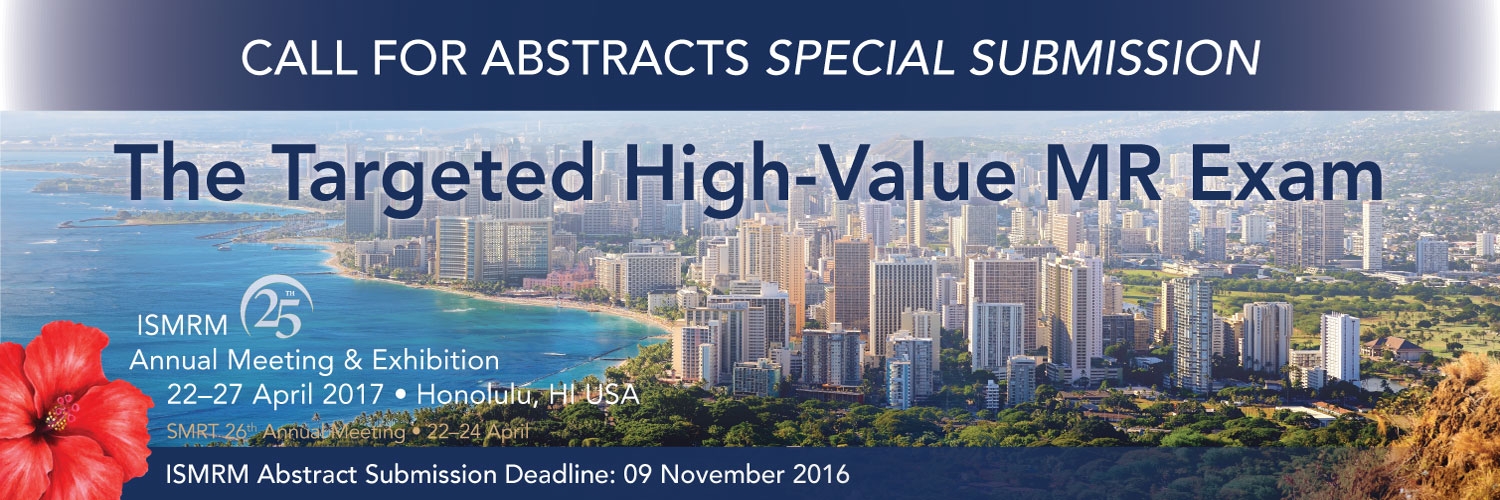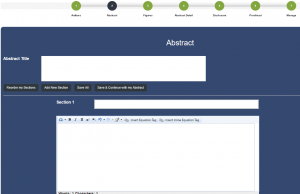The Targeted High-Value MR Exam
Phase 2: Call for Abstracts

Thank you for your interest in the first campaign of ISMRM’s MR Value Initiative! For this campaign, our goal is to identify areas where a new approach, using MR, can be used to answer a single diagnostic question as robustly as does the current standard of practice, but in a much more economical fashion. Our goal for this campaign, as with the initiative, is to make it much more than a contest. We plan to take the top entries, which will be presented at our 2017 annual meeting in Honolulu, and work with vendors and members to subsequently collect the data necessary to change the standard of practice, opening up the scope of MR in ways that are clinically meaningful and economically sustainable.
Submission Deadline: 09 November 2016 23:59 EST
What are we looking for? We ask that you look for applications with high impact – some combination of (1) common indications with (2) substantial impact on the patients’ quality of life or life expectancy, that currently require (3) expensive diagnoses and (4) for which the diagnostic information (in this case, the answer to the question) can have a positive impact on treatment and patient outcome. Not every entry will meet all of these criteria, but keep this in mind as you consider your submission.
This is a two-step process. Please read these instructions carefully.
Part One: Abstract Submission
On the submission site, please select review category 1502 Targeted High-Value MR Exam (SPECIAL SUBMISSION).
You must label your abstract sections on the submission site abstract page (see screencap below) as follows and supply the information requested in each section (limit 750 words):
- Clinical Question: What is the clinical question to be answered?

- Please describe in one sentence.
- Impact: Describe the diagnostic task that is being addressed and its importance in healthcare.
- Please include the scope of the clinical problem (e.g. the burden of disease, the role of imaging in clinical decision-making, the benefits of efficiency) and the target population for your innovation.
- Approach: Describe your innovative high value MRI protocol.
- Please compare the old (traditional) approach, with your new approach, highlighting key differences. Examples of traditional approaches include standard MRI protocols, non-MRI imaging, or other methods (e.g. surgery, blood tests, psychological testing, etc.). Examples of new approaches are new MR sequences or techniques, or truncated protocols of commonly used MR exams.
- Gains and Losses: Summarize the anticipated gains and losses from a clinical standpoint.
- Other than answering the stated clinical questions, what additional clinical information will your method give, or lose, compared to the traditional technique? Please describe why the new approach is not expected to result in harm to the patient, relative to the old approach (give a rationale for non-inferiority)
- Preliminary Data: What is the difference in image quality, comparing standard vs. new approaches?
- Please submit at least 10 representative paired image sets from patient studies, illustrating the new and old protocols. If the traditional approach is not an imaging approach, please give whatever data are appropriate (paired with the new MR images per patient). Please provide a short narrative describing the diagnostic capability and cost efficiency of the new versus the standard approach (or any other important points for clarification).
- You may include figures in your abstract (per the normal limit), but DO NOT SUBMIT THE COMPLETE SET OF IMAGES ON THE ABSTRACT SUBMISSION WEBSITE (SEE PART TWO BELOW).
Part Two: Image/Data Submission
- Please submit at least 10 representative paired image sets from patient studies, illustrating the new and old protocols. If the traditional approach is not an imaging approach, please give whatever data are appropriate (paired with the new MR images per patient).
- All images must be compressed into a single .ZIP file before submission. Individual image files will not be accepted.
- Your .zip file must be named “[your abstract submission number].zip”
- All images MUST be submitted by uploading your .zip file here.
Questions? Contact Jim Pipe, Ph.D. at Jim.Pipe@DignityHealth.org.
